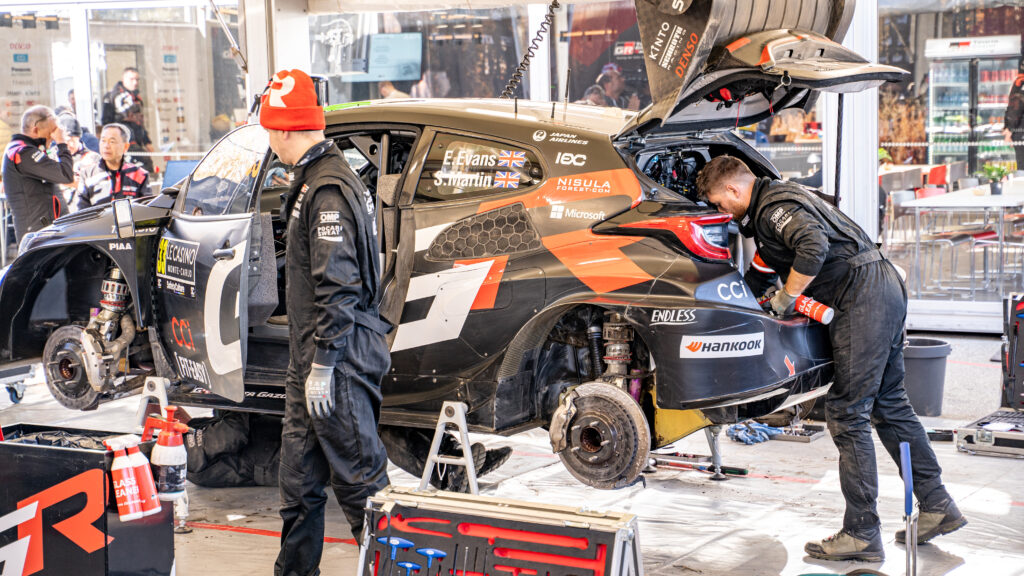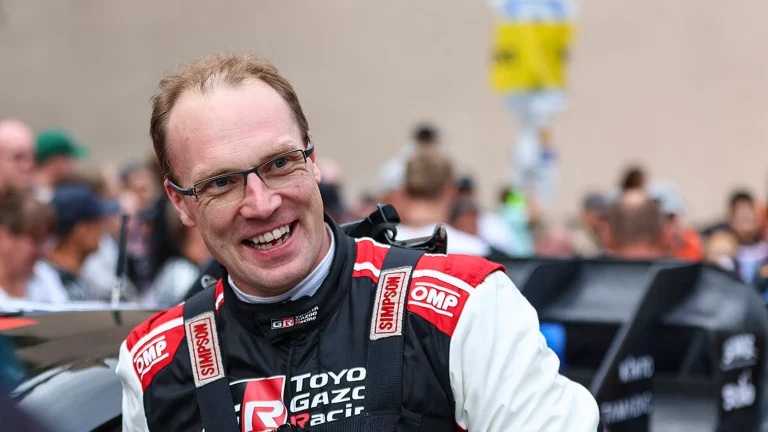Toyota Gazoo Racing is a stalwart of the World Rally Championship and has done more than many manufacturers to ensure that its motorsport programs are intrinsically linked to its roadcar operations.
Gazoo Racing brand (GR) has netted such successes as the GR Yaris (and Corolla in the U.S) as well as the highly acclaimed GR86, all lauded as exceptional drivers’ cars. Catching up with team principal Jari-Matti Latavala on the season opener Monte Carlo Rally, PMW discussed how this link has developed and the benefits it brings.
“We have a very close relationship [with the roadcar department],” he says. “Their philosophy to be in a motor sport with GR, is that when we do rally, we learn things and then try to implement those ideas into the passenger cars by GR.”
This, he notes, means the relationship between team and manufacturer is quite different to many other OEMs involved in racing. “In the past, racing was just marketing. But when it is just marketing, it is very easy to invest, but then also very easy to stop it. Once you have a link to the roadcars it means there is greater commitment. It works well for both the rally team and GR roadcars.”
He points out that this was more typical approach in the 1990s, especially in rallying. “You could see more car manufacturers doing this. Lancia, Mazda, Toyota, Subaru they were all doing it. But we have lost that and now it is really only Toyota and Ford doing it like this.”
In the past, racing was just marketing. But when it is just marketing, it is very easy to invest, but then also very easy to stop it.
There are other benefits to having a constant information exchange between racing and road. For example, some of the approaches and methodologies developed in rallying can be adapted by the roadcar department. Particularly in an era where production car development schedules are becoming ever more compressed. “If you look at the development for 2027, we will have two years for a new car. Actually, with the hybrid cars, it was less than that, one and a half years. In production the cycle has always been quite long, but they have needed to reduce that. What is learned though motorsport I think can be used to help on the production car side,” he muses.
Conversely, there have also been opportunities for the production team to help racing, most recently with the development of the GR Yaris Rally2 car. “We are getting support by the Toyota Production System on how they do the road cars and we tried to implement things from that side to move quicker with the rally car. Of course, it helped that were from a very solid base with the GR Yaris.”
Toyota’s all encompassing ‘multi pathway’ approach to production car powertrains places the rally team in a good position, particularly when dealing with situations such as the will they won’t they debate around Rally1 hybrids in 2024. “I think the multi pathway is a really, really good way to think about because then you have all the options. And I think we’ve seen in the industry that maybe 4-5, years ago, everybody was going to the to the electric, very, very hard. Now you can see that that boom has a little bit started to come down, and we still don’t know what is the best solution in the future. So keeping all your options open, all the doors open, I think keeps you more competitive.”
Impact of 2027 WRC rules
With new Rally1 regulations confirmed for 2027, and a focus on major cost savings, Toyota is already working on its new challenger. “It’s actually coming quickly,” remarks Latvala. “The most important part was that we managed to get these rules written down in December. And generally, for me, there are many good things with the new regulations. The main objective is to get car prices lower, significantly lower, which I think will help get more privateers in the game, and also probably make it a smaller step for new manufacturers to come on board.”
The use of a common tube chassis, which teams will have to make available to other manufacturers if requested, along with tight cost controls on many components and the use of Rally2 derived powertrains all look to be a popular move. However, Latvala cautions, “I think we just need to make sure that what looks good on paper still looks good when we get it in reality. I know that the target, which is set at 350,000 Euros [compared to around 850,000 Euros now], I have to say it’s very optimistic. I think it’s a bit too optimistic. But if we target, let’s say, about 500,000 Euros. I think that would be very realistic for a Rally1 car and represent a considerable cost reduction [on the current cars].”
He also notes that the running costs of the cars are under scrutiny. For example, “We have been discussing that, basically, the most expensive parts are the carbon fibre parts, especially when you damage the car. Let’s say that you lose a quarter panels or rear wing. Replacing those is very expensive. There’s been discussion that, can we use cheaper materials, that we would keep the running costs lower? I think that decision is not made yet, but there are many discussions about it.”



